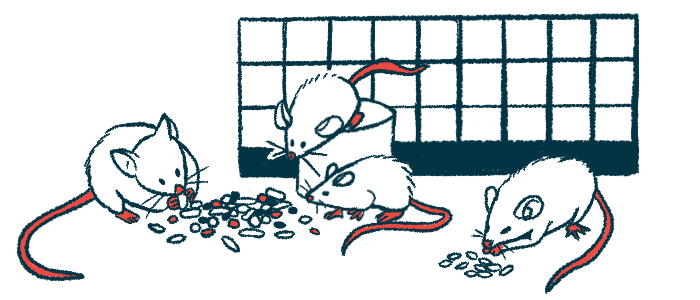Gene therapy given after seizure onset shows promise in early study
Treatment led to improvement in cognitive function in mouse model of Dravet
Written by |

A novel gene therapy developed by a team of scientists was able to reduce seizures, improve cognitive scores, and extend survival in a mouse model of Dravet syndrome, a new study reports.
The therapy showed beneficial effects even when administered after the animals had already begun experiencing seizures.
“The treatment we developed is the first that has been proven to be effective for Dravet syndrome when given after the onset of spontaneous convulsions, and the first that resulted in an improvement in the cognitive function of the [Dravet syndrome] mice,” Moran Rubinstein, PhD, study co-author at Tel Aviv University in Israel, said in a press release.
“We registered a patent, and we hope that in the future the treatment will reach the clinic and help children suffering from this serious disease,” Rubinstein said.
The study, “Viral vector–mediated expression of NaV1.1, after seizure onset, reduces epilepsy in mice with Dravet syndrome,” was published in The Journal of Clinical Investigation.
Scientists engineer viral vector to deliver healthy version of SCN1A gene
Most cases of Dravet syndrome are caused by mutations in the SCN1A gene, which provides instructions for making part of a cellular protein called NaV1.1. Here, scientists engineered a viral vector to deliver a healthy version of the SCN1A gene into nerve cells.
“In genetic therapies, it is customary to use viruses as carriers that carry normal genetic material into the patient’s body in order for it to be added to the damaged DNA and enable normal activity,” Rubinstein said. “For this purpose, the virus is engineered: its original genetic material is removed so it cannot cause disease or replicate itself, and instead, the relevant normal gene is packed inside.”
Many gene therapies use a type of virus called adeno-associated virus, or AAV. However, AAV isn’t suitable for Dravet gene therapies because the SCN1A gene itself is very large, and it’s difficult to physically fit the large genetic sequence into virion (virus particle) of AAV.
To get around this issue, the researchers used a different, but related virus called canine adenovirus type 2 (CAV-2), which has more physical room to package in genes. As its name suggests, CAV-2 normally infects dogs, and is one of the viruses that can cause “kennel cough.”
In an initial series of tests, the researchers optimized the gene therapy and showed that it could deliver functional SCN1A to nerve cells in the brain as designed.
“Our treatment added a normal gene to the damaged neurons in the brain, which was enough to restore them to normal function,” the researchers wrote. “The return of the normal gene in its entirety is particularly important for treating Dravet syndrome, because in different children the mutation occurs in different places in the gene, and injecting a complete gene is a uniform treatment suitable for all [Dravet syndrome] patients.”
Findings also suggested that the CAV-2 virus used in the study “infects many nerve cells in the brain, and spreads widely beyond the injection site, adding to its effectiveness,” the researchers added.
After optimization and proof-of-concept tests, they tested the therapy in a mouse model of Dravet syndrome.
Gene therapy significantly reduces rate of heat-induced seizures in mice
In initial tests, the gene therapy was injected into the mice’s brains at age five weeks, which is roughly equivalent to around ages 6 to 8 years for a human. Results showed that the gene therapy significantly reduced the rate of heat-induced seizures — roughly 40% of treated mice were completely free of seizures.
The team then tested the therapy in mice at age three weeks, which is shortly after the onset of seizures in this model, roughly equal to age 1 to 2 years in a human. Results showed an even more pronounced decrease in seizure rates when the therapy was given earlier. Rates of seizure-related death were significantly reduced in mice given the gene therapy, and treated mice also performed better on memory tests, suggesting an improvement of cognitive symptoms.
These data “suggest that this potent treatment may be applicable during the severe and chronic stages of [Dravet syndrome],” the researchers concluded.
In addition to being a potential therapy for Dravet, this new approach could serve as a platform for developing gene therapies targeting other neurological disorders, the team said.
“The platform we developed is a plug & play platform for genetic therapies, and perhaps in the future, we will be able to pack into the carrier virus different types of normal genetic material to treat additional diseases,” Rubinstein said.








